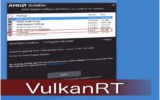To make it clear, how a CRM system works in a certain company, I will provide an example. Imagine a guy called John runs a window installation company. Previously, there were few clients, and everything was quite simple: you just had to accept an order, do the measurements, agree on the cost, get paid, install windows. But then the number of customers increased, and it wasn’t just 3 anymore but 33. And here we go … One client has still not been called back, another one waits for window measuring, the third one has not received the pricing, and the fourth has paid a month ago, and the windows are still not installed. Customers began to leave for competitors, and the cost of new employees stopped to pay off. John did not have time to control every step of his employees and realized he had to change something.
He has implemented a CRM system, and now the interaction with each client is on a single standard:
- When a customer makes a request on the site, a transaction card appears in a CRM, where the stage of the sales funnels is specified, i.e. “The first call”. A CRM system sets a task for the manager. i.e. “Call the client back within 15 minutes”. If the task is overdue, CRM will notify the head.
- The manager calls the client directly from a CRM, records negotiation results in the transaction card and transfers it to the “Measurements” stage. A CRM system automatically creates a task for a measuring specialist (“Do window measuring [date, time]”).
- After the departure, the specialist attaches a document with dimensions/terms of reference to the transaction card and transfers it to the “Coordination” stage.
- A responsible manager gets the task to calculate the cost and call the client within 2 hours. He/she records the calculations in a CRM and makes a call.
- The transaction enters the “Payment” stage, a CRM automatically generates a document (according to the template) with a name, address, service name, amount, and payment details. The manager has to send the document to the client, receive the payment, and go to the last stage (“Installation”).
- Installer immediately receives an automatic notification that he/she has to install windows before a certain date.
- In the meantime, the head keeps track of online reports, e.g. a number of deals closed, calls made by each manager, deal number/amount, order conversion, sources that bring the most clients, etc.
So, what does CRM do?
The program helped John to systematize the data on clients and transactions, employees stopped forgetting about cases and deadlines. The conversion of orders into sales and banking has increased, clients have become more loyal, resulting in increased profits. Now John does not have to be in the office to make everyone work as they should. Now he can spend more time on the strategy.
What problems does CRM solve
- Do managers forget to process requests?
A CRM captures requests from a website, appoints responsible managers, and sets tasks for them at each sale stage. If the task is overdue, the manager immediately learns about it. You will not lose any more clients.
- Is it difficult to analyze sales?
A number of new leads, transactions, calls, and meetings – a CRM will give you visual reports on all business processes, provide a report on each employee, and help detect lazybones in your sales department.
- Is the employee turnover reflected in sales?
The history of working with clients is collected in a CRM system. A new manager can immediately get on the inside. He/she just needs to perform tasks set by the program, transfer a deal to new stages, and communicate with clients competently.
- When a manager leaves, does he/she take a client base?
Set up CRM access rights so that managers can only see their own clients. That’s how nobody but you will have access to the full client base, and will not steal it.
What should be in CRM
First, you need to understand what you want from a CRM system. Developers constantly expand the functionality of programs, i.e. add new integration, gamification elements, business card scanning, etc. But often companies do not use these options, and, having introduced such a CRM, you will overpay for excessive functionality.
However, there is a set of features that must be present in a CRM system:
- A customer accounting module that stores the entire history of customer interaction.
- Sales management module with a clear sales funnel, where you can see where each transaction is located.
- Automation of business processes which allows you not only to set tasks but also send SMS, change object data, remind about upcoming important dates, e.g. the deadline for the contract termination or a birthday.
- Real-time analytics and reports in the form of graphs and diagrams, as well as tables in detailed data.
- Task management is structured in such a way that a manager receives instant reports on completed/overdue cases of employees.
- Integration with mail, website, and IP-telephony, so that all incoming requests, no matter what channel they are received through, are immediately recorded in a CRM.
- API programming interface which allows you to configure integration with 1C, corporate software, mobile and other types of apps.



Reply